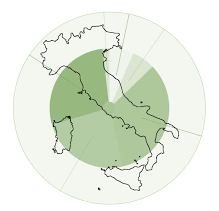Between 1990 and 2021, globally, the number of people per year who suffered a new stroke increased by 70 percent, deaths caused by stroke increased by 44 percent, and stroke-related health loss, measured in disability-adjusted life years (DALYs), increased by 32 percent.
This trend reflects the combined increase in the global population, an aging population, and increased exposure to behavioral and environmental risk factors.
Stroke: a preventable but growing disease
Despite being highly preventable, stroke is a leading cause of death and disability globally.
In 2021, 84 percent of the global stroke burden was attributed to 23 modifiable risk factors, including:
- Air pollution (both outdoor and domestic),
- Excess body weight (high BMI),
- Hypertension (elevated systolic blood pressure),
- Smoke,
- Physical inactivity.
These risk factors on the one hand present a public health challenge, but they are also an important opportunity for targeted preventive interventions.
Concrete actions to improve stroke prevention and treatment could greatly reduce the overall burden of the disease, especially in low- and middle-income countries, where most of those affected live.
Rising temperatures and the risk of stroke.
One of the areas of greatest concern is the effect of high temperatures on health.
Since 1990, the contribution of high temperatures to poor health and early stroke-related deaths has increased by 72 percent.
This trend is likely to grow in the future, given the ongoing climate crisis and increasing heat waves, which can exacerbate stroke risks, especially among vulnerable populations such as the elderly, children, and people with pre-existing conditions.
High temperatures can increase stroke risk in several ways:
- Dehydration: affecting blood circulation and blood pressure.
- Increased cardiovascular stress: which can trigger ischemic or hemorrhagic events.
- Influence on coagulation mechanisms: which increases the risk of thrombus formation.
The role of air pollution
Another significant finding concerns the impact of fine particulate matter (PM2.5) air pollution on stroke, particularly subarachnoid hemorrhage, a form of brain hemorrhage that is often fatal.
The study shows that particulate pollution has a significant contribution to mortality and disability related to this type of stroke, with an incidence comparable to that of smoking.
Thus, the crucial role of environmental factors in preventing strokes and reducing their overall burden should be considered.
Geographic and socioeconomic differences in the burden of stroke
The burden of stroke varies widely among different regions of the world and among countries at different income levels.
In low- and middle-income countries (LMICs), stroke incidence and mortality are significantly higher than in high-income countries.
In particular, regions in East Asia, Central Asia, and sub-Saharan Africa have two- to 10-fold higher rates of incidence, prevalence, mortality, and DALYs than high-income countries such as North America and Western Europe.
In 2021, age-standardized mortality rates were lowest in countries such as Singapore and New Zealand (about 14-20 deaths per 100,000 people), while countries such as North Macedonia and Nauru had much higher mortality rates (up to 277 deaths per 100,000 people).
A significant portion of the global stroke burden is attributable to hemorrhagic strokes, particularly intracerebral hemorrhage, which account for about 50 percent of the total DALYs lost globally.
These strokes are more lethal than ischemic strokes and are particularly prevalent in people with high blood pressure.
Low-income regions are particularly affected, with nearly double the proportion of hemorrhagic strokes in total strokes compared with high-income countries (37% vs. 18%).
Progress and challenges in stroke prevention
Looking at the global burden of stroke taking into account population growth and aging (age standardization), there are encouraging signs of progress: from 1990 to 2021, the rates of incidence, prevalence, mortality, and DALYs per 100,000 people decreased by 22%, 8%, 39%, and 39%, respectively.
This suggests that prevention strategies adopted globally have had a positive impact, especially in high-income countries.
However, since 2015, there has been a slowdown in global improvements, with worsening stroke rates in Southeast Asia, East Asia, and Oceania, and an increased burden of the disease in people under age 70.
Metabolic risk factors, such as high BMI, high systolic blood pressure, and high LDL cholesterol, contributed substantially to the stroke burden in all regions of the world, while environmental factors, including air pollution and temperature extremes, had a greater impact in low- and middle-income countries.
The importance of comprehensive and coordinated action
In light of these data, it is clear that the strategies currently in use to prevent stroke are not sufficiently effective.
As stated by Professor Valery Feigin, lead author of the study, there is an urgent need to implement more effective and large-scale prevention strategies, such as the use of telemedicine platforms and the training of local health workers who can manage stroke prevention and treatment even in the most disadvantaged communities.
Implementation of evidence-based recommendations, such as those outlined by the Lancet Neurology Commission on Stroke Prevention 2023, could lead to a dramatic reduction in the global stroke burden in the coming decades.
Targeted interventions to manage blood pressure, reduce air pollution, promote healthy lifestyles, and prevent metabolic diseases are essential to address this growing crisis.

